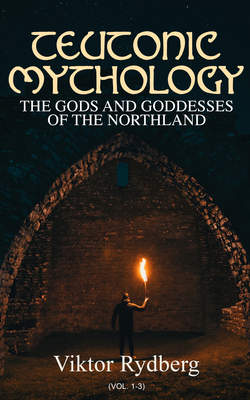Читать книгу Teutonic Mythology: The Gods and Goddesses of the Northland (Vol. 1-3) - Viktor Rydberg - Страница 42
На сайте Литреса книга снята с продажи.
28A.
HEIMDAL AND THE SUN-DIS (Dis-goddess).
ОглавлениеTable of Contents
In Saxo's time there was still extant a myth telling how Heimdal, as the ruler of the earliest generation, got himself a wife. The myth is found related as history in Historia Danica, pp. 335–337. Changed into a song of chivalry in middle age style, we find it on German soil in the poem concerning king Ruther.
Saxo relates that a certain king Alf undertook a perilous journey of courtship, and was accompanied by Borgar. Alf is the more noble of the two; Borgar attends him. This already points to the fact that the mythic figure which Saxo has changed into a historical king must be Heimdal, Borgar's co-father, his ruler and fosterer, otherwise Borgar himself would be the chief person in his country, and could not be regarded as subject to anyone else. Alf's identity with Heimdal is corroborated by "King Ruther," and to a degree also by the description Saxo makes of his appearance, a description based on a definite mythic prototype. Alf, says Saxo, had a fine exterior, and over his hair, though he was young, a so remarkably white splendour was diffused that rays of light seemed to issue from his silvery locks (cujus etiam insignem candore cæsariem tantus comæ decor asperierat, ut argenteo crine nitere putaretur). The Heimdal of the myth is a god of light, and is described by the colour applied to pure silver in the old Norse literature to distinguish it from that which is alloyed; he is hvíti áss (Gylfag., 27) and hvítastr ása (Thrymskvida, 5); his teeth glitter like gold, and so does his horse. We should expect that the maid whom Alf, if he is Heimdal, desires to possess belongs like himself to the divinities of light. Saxo also says that her beauty could make one blind if she was seen without her veil, and her name Alfhild belongs, like Alfsol, Hild, Alfhild Solglands, Svanhild Guldfjæder, to that class of names by which the sundises, mother and daughter, were transferred from mythology to history. She is watched by two dragons. Suitors who approach her in vain get their heads chopped off and set up on poles (thus also in "King Ruther"). Alf conquers the guarding dragons; but at the advice of her mother Alfhild takes flight, puts on a man's clothes and armour, and becomes a female warrior, fighting at the head of other Amazons. Alf and Borgar search for and find the troop of Amazons amid ice and snow. It is conquered and flies to "Finnia," Alf and Borgar pursue them thither. There is a new conflict. Borgar strikes the helmet from Alfhild's head. She has to confess herself conquered, and becomes Alf's wife.
